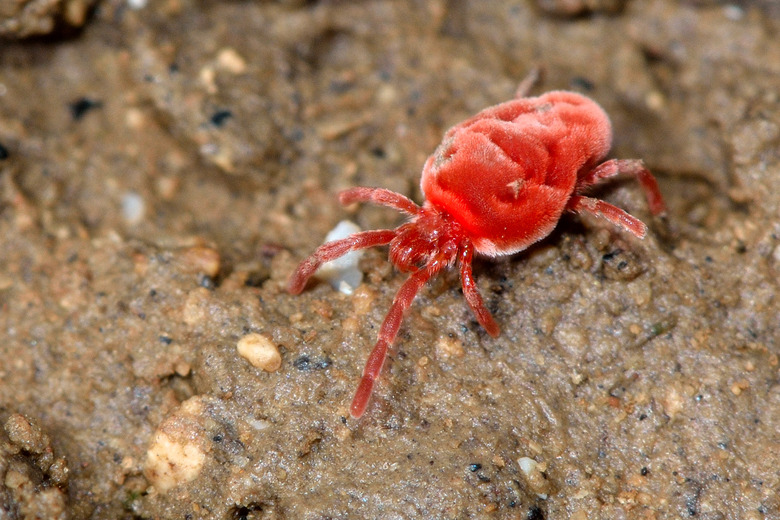Insects That Look Like Bed Bugs
If you have lived in pretty much any major city in the world, chances are you've been warned about bed bugs. Most people already know that an infestation is not a pleasant experience to have on your hands, but before you panic, you'll want to familiarize yourself with the typical characteristics that set bed bugs apart from other insects that they may resemble.
What Are Bed Bugs?
What Are Bed Bugs?
Bed bugs are invasive pests that feed on the blood of humans, usually while their hosts are asleep. They reproduce quickly and are most commonly found hiding in warm, dark spaces such as mattresses, curtains, clothing and luggage. They are sometimes found on untreated wood surfaces such as bed frames, dressers and bookshelves, as well.
While bed bugs aren't carriers of disease, an infestation can wreak havoc on a home or apartment in no time and requires an intensive treatment regimen to properly be rid of them. Because they are incredibly small in size and have a penchant for hiding in hard-to-spot spaces, identifying them can be tough, but not impossible if you know what to look for.
Bed bugs are tiny little creatures, often no thicker than a credit card in size. Usually around ¼ of an inch long, they are compared to apple seeds for their brown color and pear-shaped bodies. Once they've fed, however, bedbugs become engorged with blood and usually take on a red or rusty hue. When examined up close, you'll be able to spot antennas on their heads and wings, but don't worry, because they don't fly. Baby bed bugs, known as nymphs, are translucent or whitish in color.
Which Insects Look Similar to Bed Bugs?
Which Insects Look Similar to Bed Bugs?
While they themselves look nothing like bed bugs, clover mites, which are tiny, bright red insects, can bear a resemblance to the bloody spots crushed or mating bed bugs can leave behind on mattresses. Because clover mites tend to stick to window sills, however, it's unlikely you'll find any in your bed, but it's worth keeping in mind in case you start to notice red dots on your curtains.
In addition to the little red stains, bed bug droppings appear as tiny black dots, which look similar in size and shape to fleas.
Poultry bugs and barn swallows in many ways resemble bed bugs, with flat, seed-shaped bodies, but these are often found living outside of the home, usually in barns or other outdoor areas. Perhaps the most commonly mistaken bug is the carpet beetle. Their segmented bodies nearly match the exact color of an unfed bed bug, and they often infest fabrics such as bedding, blankets, clothing and upholstered furniture. Carpet beetles are more elongated in shape, however, and are covered in a layer of fuzzy hair, which can irritate the skin and may resemble a bug bite allergy.
How to Tell the Difference Between Bedbugs and Other Insects
How to Tell the Difference Between Bedbugs and Other Insects
There may be some bugs out there that resemble bed bugs, but there are a few unique characteristics to help tell them apart from the rest. While many types of bugs leave red welts on a person's skin after biting, bed bugs tend to keep their bites in groups of three, which often appear in a straight line on the back, arms, neck or any area where skin might be exposed. This is often the first thing people who suspect they might have bed bugs check for. Because bed bugs rarely come out during the daytime, most people notice new bed bug bites upon waking up rather than throughout the day, when one might sustain say, a mosquito or horsefly bite.
Finally, bed bug droppings often tend to emit a sweet smell that some would compare to cilantro leaves, which is not the case with any other type of insect. If you notice any of these symptoms, your best bet will be to check with an exterminator to tackle the problem and prevent further spread of bed bugs if need be.
Cite This Article
MLA
Howard, Krissy. "Insects That Look Like Bed Bugs" sciencing.com, https://www.sciencing.com/insects-that-look-like-bed-bugs-13405750/. 23 August 2018.
APA
Howard, Krissy. (2018, August 23). Insects That Look Like Bed Bugs. sciencing.com. Retrieved from https://www.sciencing.com/insects-that-look-like-bed-bugs-13405750/
Chicago
Howard, Krissy. Insects That Look Like Bed Bugs last modified March 24, 2022. https://www.sciencing.com/insects-that-look-like-bed-bugs-13405750/
